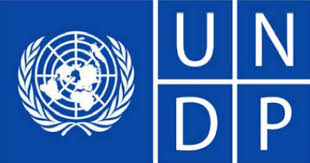By Sonny Aragba-Akpore
“With only a fraction of the Sustainable Development Goals(SDGs) on track at the halfway point of the 2030 Agenda, it is urgent to ensure that everyone, everywhere can build their own digital futures,” according to International Telecommunications Union (ITU) Secretary-General Doreen Bogdan-Martin at the opening session of the SDG Digital Conference held on the sidelines of the 78th United Nations General Assembly (UNGA),New York,United States of America(USA) last week.
Hosted by ITU and the United Nations Development Programme(UNDP), SDG Digital Conference was a clarion call to the global community that time is running out and there is an urgent need to harness and deploy resources if the year 2030 goals will be attained.
UNDP Administrator Achim Steiner in the his opening remarks at the SDG Digital Acceleration Agenda said “the recent breakthroughs in digital technology have unleashed unprecedented opportunities, and with them new avenues for digital innovation in our race against time to fulfil the promise of the 2030 Agenda.”
UN documents say “the Sustainable Development Goals (SDGs) aim to transform our world. These are calls to action to end poverty and inequality, protect the planet, and ensure that all people enjoy health, justice and prosperity.”
SDGs were born at the United Nations Conference on Sustainable Development in Rio de Janeiro, Brazil in 2012. The objective was to produce a set of universal goals that meet the urgent environmental, political and economic challenges facing our world.As part of the declarations, SDG agenda took root in 2015 and will run till 2030.
Early last week, ITU announced a drop in the number of people worldwide without a connection to the Internet to 2.6 billion people in 2023 from 2.7 billion in 2022.
The statistic on the global offline population is important for tracking connectivity, a foundation of using technology for sustainable development. At the current trend, the global targets for universal and meaningful connectivity are unlikely to be met by 2030.
SDG Digital highlights that the funding gap of over USD3.7 trillion for the SDGs should focus international efforts on enablers—such as infrastructure and connectivity—as well as the pooling of resources through collaboration including the private sector and the utilization of diverse financing methods.
There are hopes on the horizon as SDG Digital received new commitments to accelerate progress on the Sustainable Development Goals.
Diverse partnerships and financing are proven to scale up digital solutions and drive innovation.
SDG Digital received financial, strategic and operational commitments from U.N. member states, the private sector, finance bodies, international organizations and philanthropic foundations to help put the Sustainable Development Goals (SDGs) back on track.
The high-level SDG Digital event, convened by the ITU and UNDP at U.N. Headquarters, stepped up digital support for the world’s 2030 Agenda as part of the SDG Action Weekend of the United Nations.
While 2020 saw a double-digit growth in Internet connectivity, the number of people offline worldwide continues to decline to 33 per cent in 2023, according to the latest data from ITU.
In 2023, the number of people not connected to the Internet decreased to an estimated 2.6 billion or 33 per cent from the estimated 2.7 billion people offline in 2022. Only 67 per cent of the world’s population, or 5.4 billion people, are online in 2023, the report said.
“This improvement in connectivity is another step in the right direction, and one more step towards leaving no one behind in support of the UN Sustainable Development Goals,” said ITU Secretary-General Bogdan-Martin, in a statement.
“We won’t rest until we live in a world where meaningful connectivity is a lived reality for everyone, everywhere,” Bogdan-Martin added.
According to early estimates, growth in Internet connectivity remains the strongest in low-income countries where data indicate that Internet users increased by about 17 per cent over the past year. However, less than one-third of individuals are connected to the Internet in these countries.
UN assessments on the progress so far explained that half of the 169 SDG targets is either weak or insufficient at the 2030 Agenda’s halfway point. 30 % of the SDG targets have either stalled or gone in reverse.
“With digital transformation demanding joint efforts between the private sector, financial institutions, civil society, the UN, governments and young people, SDG Digital brings together experts, policy-makers and business leaders to explore the achievements, gaps and solutions on how digital technologies can support the 2030 Agenda.” joint documents by ITU and UNDP state.
The SDG Digital Acceleration Agenda, developed by ITU and UNDP together with Boston Consulting Group (BCG) as knowledge partner, and the Inter-American Development Bank (IDB) as Agenda supporter, shows how digital technologies kickstart economic and societal transformation by creating scale and efficiencies.
The Agenda features digital solutions that are already demonstrating how technology can directly benefit 119 of the 169 SDG targets, or about 70 per cent, including in areas such as climate action, education, hunger and poverty.









